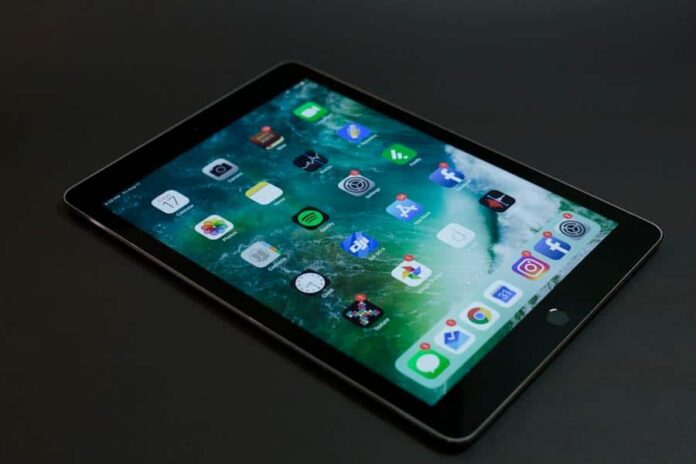In an era dominated by digital devices, the iPad has emerged as a versatile companion, offering a myriad of functionalities to its users. From browsing the web and staying connected with friends and family to engaging in creative pursuits and productivity tasks, the iPad has become an indispensable tool in our daily lives. However, one critical question continues to loom large for potential buyers: “Is 128GB enough for an iPad?” In this comprehensive guide, we will delve into the intricacies of iPad storage, exploring why 128GB might be the ideal choice for many, when it may fall short, and how you can optimize your storage space to make the most of your iPad experience. Join us as we unravel the mystery behind iPad storage capacity and equip you with the knowledge to make the right decision for your needs.
Is 128 GB Enough For iPad?
Yes, for most users, 128GB is sufficient for an iPad. It offers a balanced storage capacity, accommodating apps, photos, videos, and documents without feeling cramped. However, users with extensive media libraries, creators working with large files, or avid gamers might consider higher-capacity models to ensure they have ample space for their needs. Ultimately, the choice depends on your usage patterns and budget.
Understanding iPad Storage
iPad storage is a crucial factor to consider when choosing the right model for your needs. Before determining whether 128GB is sufficient for your iPad, it’s essential to grasp how iPad storage works and what elements contribute to your storage requirements.
iPads come in various storage capacities, including 32GB, 64GB, 128GB, 256GB, and 512 GB. The storage capacity you opt for directly impacts how much space you have for apps, photos, videos, and other files. Every app you install consumes a portion of your iPad’s storage space. Some apps are more storage-intensive than others. High-resolution photos and 4K videos can rapidly deplete your storage.
Downloaded songs and playlists from streaming services can accumulate over time. PDFs, documents, and other files add to your storage usage. iOS updates and app updates often necessitate temporary storage space. Having some free space on your device ensures these updates can be installed smoothly.
When 128 GB May Not Be Enough?
While 128GB is sufficient for most users, there are certain scenarios where it may not provide enough storage:
- 1. Frequent 4K Video Recording: If you’re a videographer or someone who regularly records 4K videos on your iPad, you’ll quickly find that 128GB fills up. High-quality video files are substantial and can quickly eat into your storage space. In such cases, you might require a higher-capacity iPad model.
- 2. Extensive Raw Photo Editing: Photographers who work with RAW image files require ample storage for their editing projects. RAW files are large and can quickly consume your available storage. If you’re a photography enthusiast, consider a higher-capacity iPad.
- 3. Multiple Users: If you share your iPad with family members, colleagues, or friends, and they also store their data on the device, 128GB can get crowded quickly. In shared usage scenarios, a larger-capacity iPad model may be a more practical choice to avoid constant storage constraints.
- 4. Extensive Game Downloads: Gamers who plan to download graphics-intensive games will find that 128GB can run out quickly. Some large games can take up several gigabytes of storage space. If you’re a serious gamer, you might prefer an iPad with higher storage capacity.
- 5. Future-Proofing: If you’re unsure about your future storage needs, it’s often wise to opt for a higher-capacity iPad to ensure you won’t run into storage limitations as your usage evolves over time.
Tips For Maximizing Your 128 GB iPad
To make the most of your 128GB iPad and keep it running smoothly, here are some practical tips and tricks:
- Use Cloud Storage: Take advantage of cloud storage services like iCloud, Google Drive, or Dropbox to store photos, documents, and other files. This will free up local storage and ensure your data is accessible from any device.
- Offload Unused Apps: Enable the “Offload Unused Apps” feature in iOS settings. This removes apps you don’t frequently use but retains their data, helping you regain storage space without losing app settings.
- Stream Content: Instead of downloading large movies or music collections, consider streaming content from services like Apple Music, Netflix, or Spotify. This reduces the need for local storage and allows you to enjoy your favorite media without taking up precious space.
- Delete Old And Unnecessary Files: Periodically go through your photos, videos, and documents and delete what you no longer need. This will help keep your iPad clutter-free and maximize available storage.
- Use The Files App: The Files app in iOS allows you to manage your files more efficiently. Organize your documents and files into folders and delete anything that’s no longer relevant.
- Optimize Photos And Videos: Use the “Optimize iPhone Storage” feature in iCloud settings. This stores full-resolution photos and videos in the cloud while keeping smaller, device-friendly versions on your iPad. It saves space without sacrificing quality.
- Clear Safari Cache: Safari can accumulate a significant amount of cache over time. Clearing your browser’s cache and history can help free up storage space.
- Manage Downloads: Be mindful of downloading large files or apps unnecessarily. If you only need a file temporarily, consider deleting it once you’re done.
- Use External Storage: Invest in external storage options like external hard drives or wireless storage devices that can expand your iPad’s storage capacity when needed.
- Regular Software Updates: Keep your iPad’s operating system and apps up to date. Sometimes, software updates include optimizations that can help improve storage management.
How To Choose The Right iPad?
Choosing the right iPad involves considering various factors to match your needs, preferences, and budget. Here’s a step-by-step guide to help you make an informed decision:
- Determine Your Usage: Start by identifying how you intend to use your iPad. Are you primarily interested in casual web browsing, email, and reading? Or do you need it for creative work, gaming, or productivity tasks? Your usage pattern will significantly impact your choice.
- Evaluate Your Budget: Set a budget range for your iPad purchase. iPad models vary in price based on features and storage capacity, so knowing your budget will narrow down your options.
- Consider The Size And Form Factor: iPads come in different sizes and form factors. You can choose from standard iPads, iPad Mini, iPad Air, and iPad Pro models. Consider the portability and screen size that best suits your needs.
- Storage Capacity: Determine your storage requirements. For casual use, 128GB is often sufficient. However, if you have extensive media libraries, work with large files, or share your device with multiple users, you may need more storage.
- Connectivity Options: Decide if you need cellular connectivity in addition to Wi-Fi. Cellular models allow you to access the internet on the go, but they are more expensive and come with ongoing data plan costs.
- Performance Needs: If you plan to use your iPad for resource-intensive tasks like video editing or gaming, opt for a model with a faster processor and better graphics capabilities, such as an iPad Pro.
- Apple Pencil And Keyboard Support: If you’re an artist or prefer a laptop-like experience, consider iPad models that support the Apple Pencil and Smart Keyboard accessories.
- Battery Life: Evaluate the battery life of different models, especially if you intend to use your iPad for extended periods without access to a charger.
- Operating System: Ensure that the iPad model you choose supports the latest iOS or iPadOS updates. Older models may not receive software updates for as long as newer ones.
- Future-Proofing: Think about how your needs may evolve over time. If you’re unsure, it’s often a good idea to opt for a slightly more capable model to ensure it remains relevant for several years.
Final Words
In the ever-expanding world of technology, selecting the perfect iPad is a decision that should align with your unique requirements and preferences. Whether you’re a casual user seeking entertainment or a professional needing robust performance, there’s an iPad tailored to your needs. Remember to factor in usage patterns, budget, size, storage, and accessories. Make an informed choice to ensure your iPad not only meets your current demands but also provides a platform for seamless productivity and enjoyment in the years to come. Happy iPad hunting!
FAQ’s
How Much Storage Do I Need For Casual Use?
For casual use like web browsing and email, 128GB is generally sufficient.
Is 128 GB Enough For Gaming?
It depends on the games you play. Some large games may require more storage, so consider a higher capacity if you’re a serious gamer.
Can I Upgrade iPad Storage Later?
No, iPad storage is not user-upgradeable. Choose your storage capacity wisely when purchasing.
Do I Need Cellular Connectivity For More Storage?
No, cellular connectivity doesn’t affect storage capacity. It determines how you connect to the internet.
Is iCloud Storage A Good Alternative?
Yes, iCloud and other cloud storage services are excellent for offloading files and managing storage.





